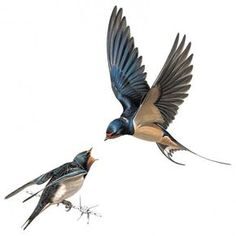Diet heterogeneity and antioxidant defence in Barn Swallow Hirundo rustica nestlings
Camila Paola Grigolo, Beatrice Sicurella, Federica Musitelli, Andrea Romano, Manuela Caprioli, Diego Rubolini, Roberto Ambrosini and Mauro Gobbi
Abstract:
Populations of several farmland bird species have suffered sharp declines linked to increased environmental homogeneity and reduced biodiversity, particularly of insects, upon which several farmland birds feed. Diet, in turn, has a crucial role in organism fitness. Antioxidants acquired through diet, in particular, help by protecting the organisms against the effects of Reactive Oxygen Species, which originate as a natural by-product of metabolism. Here we investigated the relationships among environmental heterogeneity, diet composition, and oxidative status by using Barn Swallow (Hirundo rustica) nestling as a model. By analysing chitin fragments extracted from faecal sacs, we found that nestlings’ diet was mainly composed by four insect families: Formicidae (Hymenoptera), Aphodidae (Coleoptera), Tabanidae and Syrphidae (Diptera). We also observed body parts of Diabrotica virgifera, the most important insect pest of maize (Zea mais) in the world. Nestling diet composition varied with environmental heterogeneity in the foraging range of adult Barn Swallow (i.e. 200 m from each colony). The antioxidant capacity (AOC) of nestlings, which was assessed using the OXY-Adsorbent test on blood plasma samples, peaked at intermediate values of diet diversity, suggesting that it can be mediated by the composition of the nestlings’ diet. Heterogeneous environments may offer a wide array of pray, and this may allow foraging Barn Swallow to feed their nestling with selected prey that may enhance their oxidative status. Similar mechanisms may act for a wide array of farmland birds, thus shading light on the mechanisms that link habitat homogenization and bird population declines.
